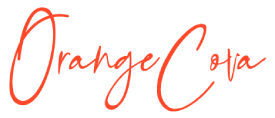In a nutshell, communication strategies in the marketing of health products and services must convince the target market of the benefits of the products and services. The goal is to influence and empower communities and individuals to make healthier choices when selecting health products and services. But this is easier said than done.
Although the internet has given us plenty of platforms to spread information, it has also given birth to a lot of distractions—fake news and unsubstantiated claims. This muffles the pool of factual information that is already having such a hard time getting across its intended audience.
The problem is that effective communication is an important factor in spreading accurate and relevant information to a public that is starved for it. While the main goal of a business in the health industry is to earn, the process should include benefiting the consumers. This is when fiction becomes reality for many of those who do not know how to separate truth from false claims. And for companies with the truest intentions to benefit their consumers, bad communication strategies defeat the purpose of the marketing campaigns.
Use of Research-backed Information
Communication strategies are not for show. They aren’t just visuals through infographics, videos, and photos. The primary purpose of these campaigns is to bring relevant information to the forefront of public knowledge. But before you even begin to think about the best channels to reach your audience, you have to decide how you’re going to get the right information.
Whatever your products and services are, if they will affect one’s health, their claims should be backed by science and health experts. Whether you’re manufacturing them on your own or acting as a distributor/direct supplier, you are bound by the rules of science. Only research-backed information should spread to the public.
Talk to doctors and other health experts. Check out health organizations. Interview patients. Seek survey results and testimonials of patients with rare diseases if you are targeting them. They have as much say in the information you claim as anyone else. They will be the most impacted by any falsehood you will start spreading through your marketing campaigns.
Understand Different Cultures, Languages, and Traditions

Science and health are not always objective and impartial. In fact, in many parts of the world, a woman’s body is not her own. As such, she cannot decide whether to use contraceptives or not. In other parts, girls as young as nine years old are married off to men old enough to be their grandfathers. The world’s varied cultures, traditions, and even languages are not always easy to navigate for companies in the health industry.
What is, for example, the concept of birth control pills in ultra-conservative nations? What about religion? They have different views on reproductive health. Even the language used by people referring to various illnesses, ailments, and medical conditions vary per country.
Consider Health Literacy, Internet Access, and Media Exposure
When building a communication strategy to market your health products, you have to realize that not all people are as health literate as you. It will surprise you to know that in many parts of the world, tampons and menstruation are still taboo subjects. How can you market to a population with very different views of your products and services? Should you even target them?
Internet access and media exposure are two more important issues to consider when crafting a sound communication campaign. How much does your audience know about your products and services? Have they seen them on the internet? Have they read reviews and testimonials about them? Is this the first time they are going to hear about them? The amount of media they are exposed to will play a significant role in their understanding of your offers.
Develop Media Materials
After you have identified the strategies that will work on the sectors you are targeting, you have to pick the right platforms and channels. Should you go the traditional route and start printing flyers and brochures? Do billboards still work? Is the topic so sensitive that you would have to resort to email marketing? How can you make something as technical and unsexy as health and science look and sound, well, sexy?
The first thing you have to know is the type of media that your intended audience is following. Who do they trust? How much time do they spend on these mediums? Once you know these, you can build a better communication strategy for channels that will reach your audience.
The past year has been challenging for the health industry. Between answering the sudden and rapid interest in health care products, the industry also has to grapple with the fact that the world will never be the same again. That means a change in the communication strategy used to market health products is in order.

